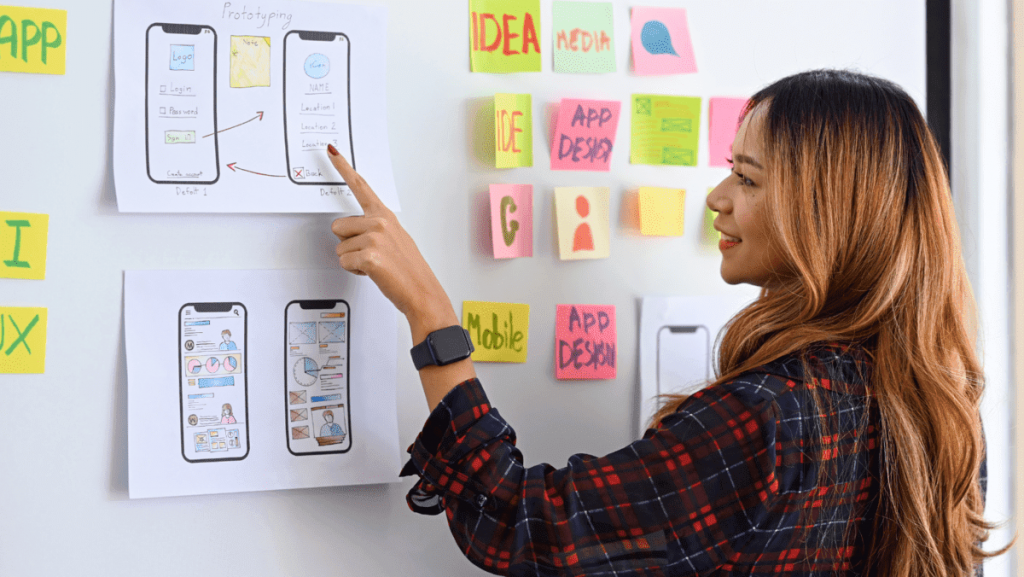
So you are a founder of a startup, owner of the product, product manager, or anyone planning to build an idea into an actual product, what is your golden rule to start? What was the process that you followed to make your idea into a reality? Has that process been a success? What are the challenges that you faced during the development phase? These are similar stories for most of us with some successful moments but a lot of painful nights, overwork and failures. Let’s try to map a generic path for product success, with heavy focus on prototyping and its importance.
Usually, software development consists of the following stages: Planning, Designing, Implementation, Testing, Deployment and Maintenance.

In the Planning stage, the requirements are gathered. The customer has an abstract idea of what the product will look like or how it should function. The skilled software engineering team gathers the requirements and clarifies any questions from the team.
In the Design stage, a mockup or a prototype is created that shows how the product or a system looks and functions.
During the Implementation stage, the software engineers start working on creating the system.
Testing is a very important stage in the software development stages. Testing ensures that the product is as per the requirement and ensures the quality of the system. Once the software is implemented, properly tested, and approved, it gets deployed to the cloud/local server, that will be accessible to the masses.
Now the users can view the product/service and benefit from the software. Then comes the training and maintenance of the software. The software team helps in maintaining and providing support for the use of the software.
Because we are talking about the design stage, specifically prototyping, and discuss why prototyping is crucial for product and business success, Let’s first start with design thinking as prototyping is the stage that comes within design thinking.
What is Design Thinking?
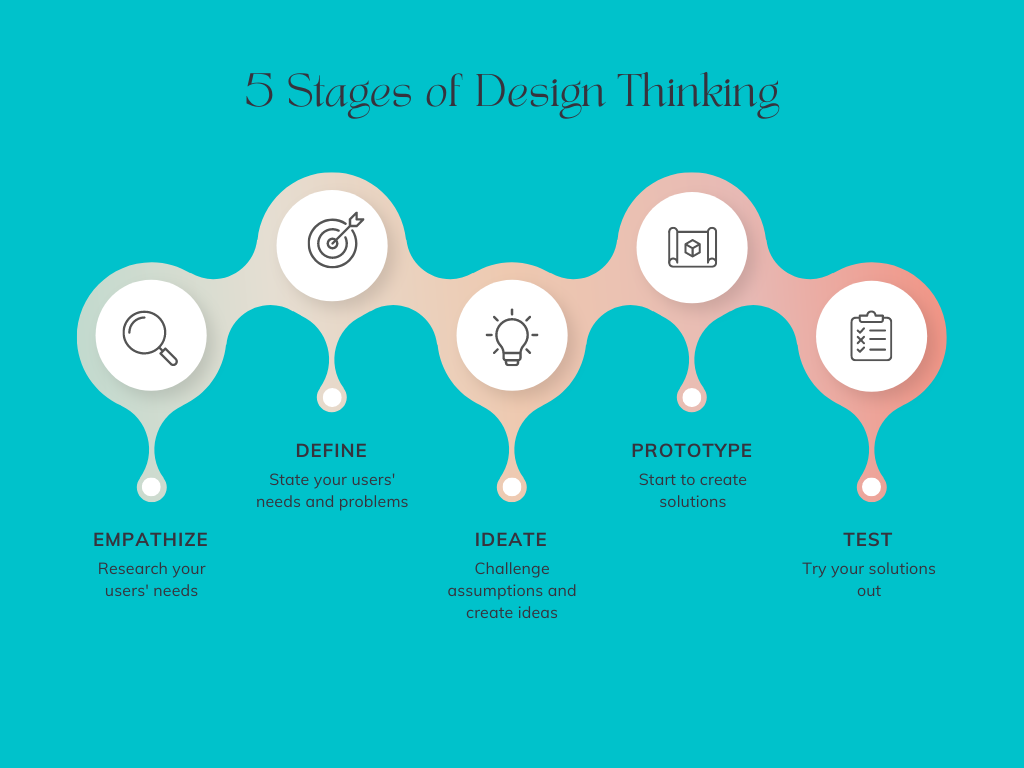
Design thinking is a process where one tries to understand the user and provide the solution by providing a prototype. The main purpose is to understand the initial requirement and identify any unforeseen challenges and come up with a better solution.
Design thinking is an iterative process that comprises 5 phases: empathize, define, ideate, prototype, and test.
Empathize: In this phase, we do user research to understand the problem.
Define: Once the research is completed, we move on to define the stage. In this stage, we analyze the user’s needs and problems.
Ideate: In this phase, we come up with new solutions and ideas to help resolve the problems and better the solution.
Prototype: Prototyping comes after the ideation. In this phase, we create designs that show how the different aspects of the product look and function with one another.
Test: Once the prototyping is complete, we move to the testing phase. In this phase, the teams test the prototype and identify the issues and if anything needs to be improved.
What is Prototyping?
Prototyping is the process where the designs/models are created for visualization of the product to explore and validate ideas before starting to develop them.
A prototype focuses on functionality and shows what the final product might look like. Prototyping brings the idea to life to see how it operates in real scenarios.
“They slow us down to speed us up. By taking the time to prototype our ideas, we avoid costly mistakes such as becoming too complex too early and sticking with a weak idea for too long.”
— Tim Brown, CEO & President of IDEO
“Prototyping is the conversation you have with your ideas.”
— Tom Wujec, Author
WHY Prototyping is necessary?
Design prototyping should be considered an important part of the development process in any product development. Prototyping helps in identifying the requirements better, communicating the requirement to the development team, and discovering any unforeseen obstacles.
Prototyping helps in understanding the requirements early on. Since prototyping is done before the development, the requirements are clearer. It shows the expected output from the product. The prototype shows the functionality of the product, which helps the team brainstorm ideas and come up with better solutions. They also help in revealing unseen obstacles and challenges.
Here is an example that shows the lack of a prototype in a project. Wouldn’t you say this is a disaster?
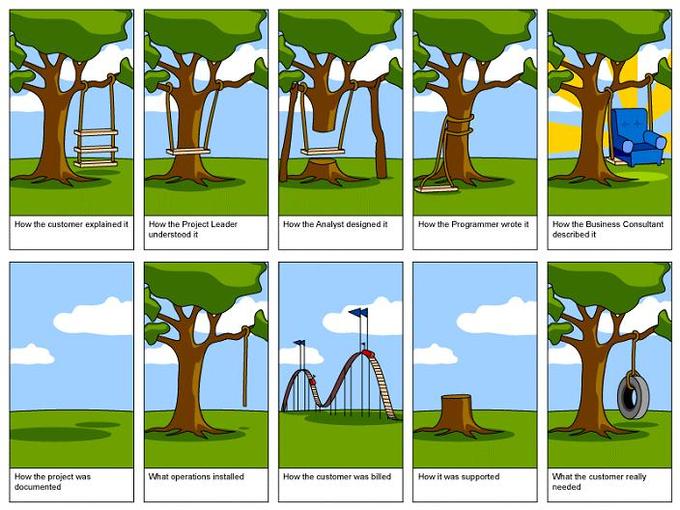
Image Credits: photo
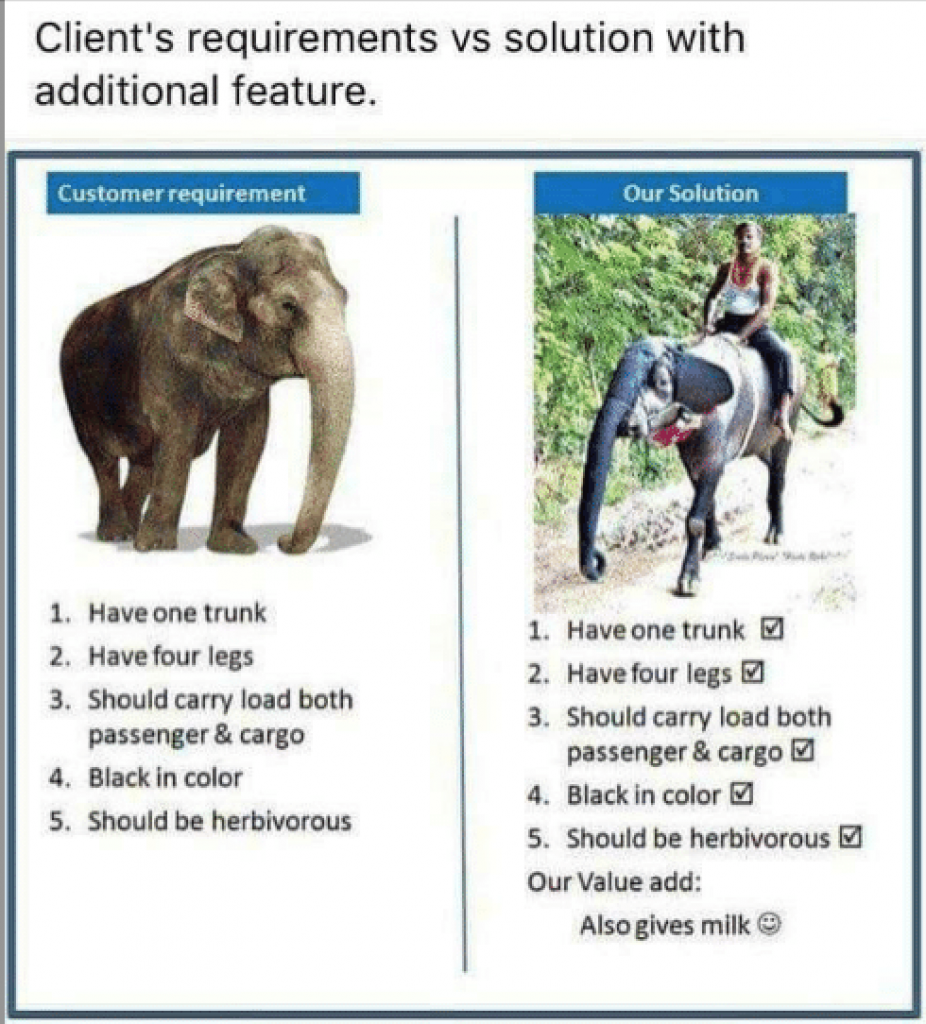
Image Credits: photo
In both above examples, what is the one obvious mistake? Could it have been resolved with a prototype? If there had been a prototype showing how the project looks like and how it should function before straight jumping into implementation, the project could have been rescued, which would save time, sweat and resources.
Difference Between Prototyping, Wireframing and Mockups?
Generally, people often are confused about prototyping, mockups and wireframes as these are often used exchangeably. However, there is a difference between a prototype, wireframe, and a mockup.
A wireframe represents a basic design layout that displays key information about the product. It shows the initial product concept.
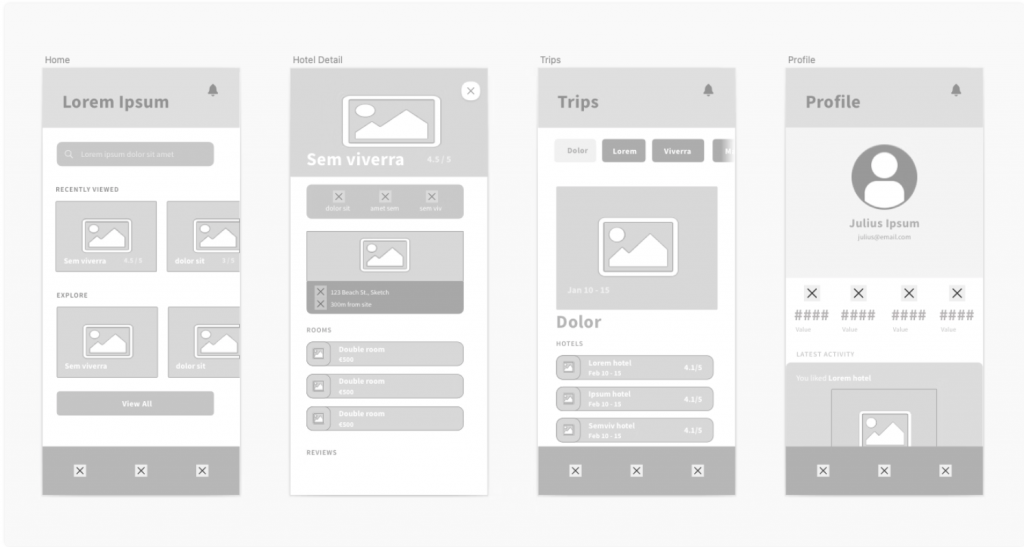
Example of Wireframe, Image Credits: photo
A mockup represents a design that shows how the finished product will look. Mockup is a static representation on how the product looks like with color schemes, fonts, icons, etc. Mockup is a graphic representation that is not interactive and not clickable.Mockups can be created even on paper. Also, design tools like Figma, Adobe XD , Balsamiq and Sketch can also be used for creating a mockup.
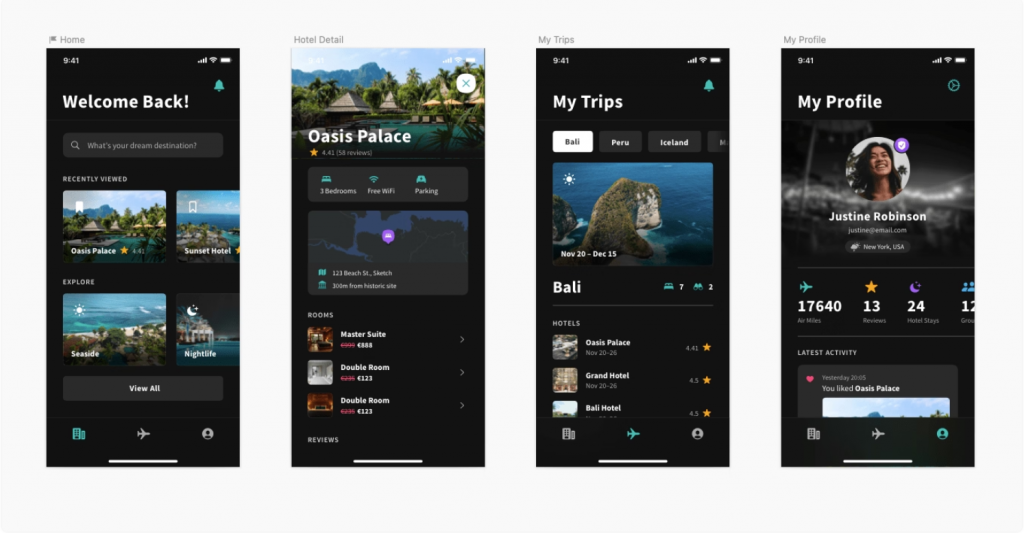
Example of Mockup, Image Credits: photo
A prototype represents a design that focuses on functionality and shows how each element interacts with one another. The prototype looks similar to a mockup. However, it adds the interactivity using various design UX tools like Figma, Adobe XD and Sketch.
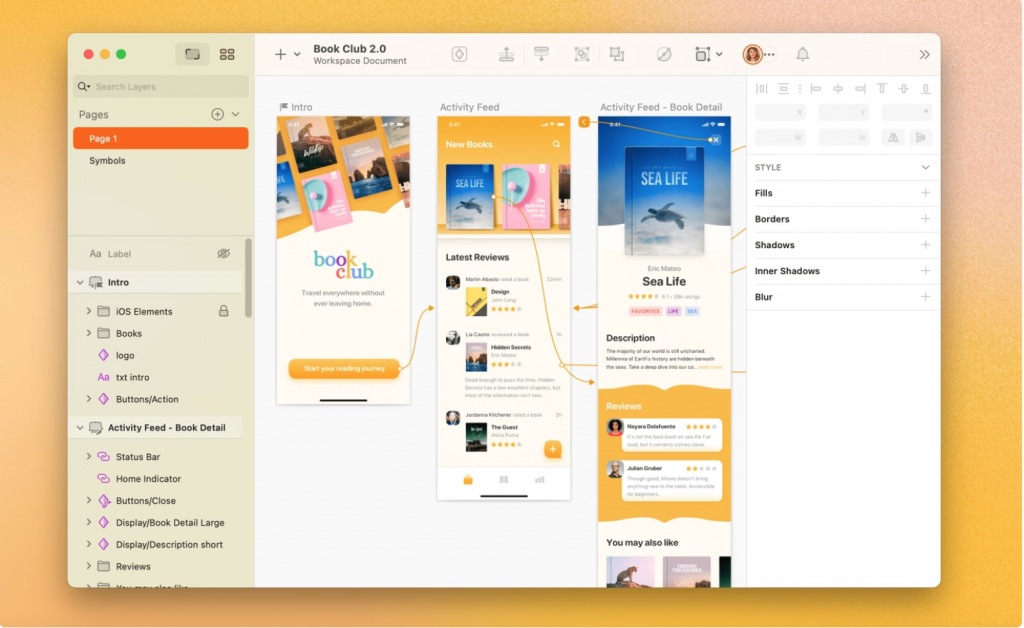
Example of Prototype, Image Credits: photo
We can view a simple representation of wireframe, mockup and prototype as:
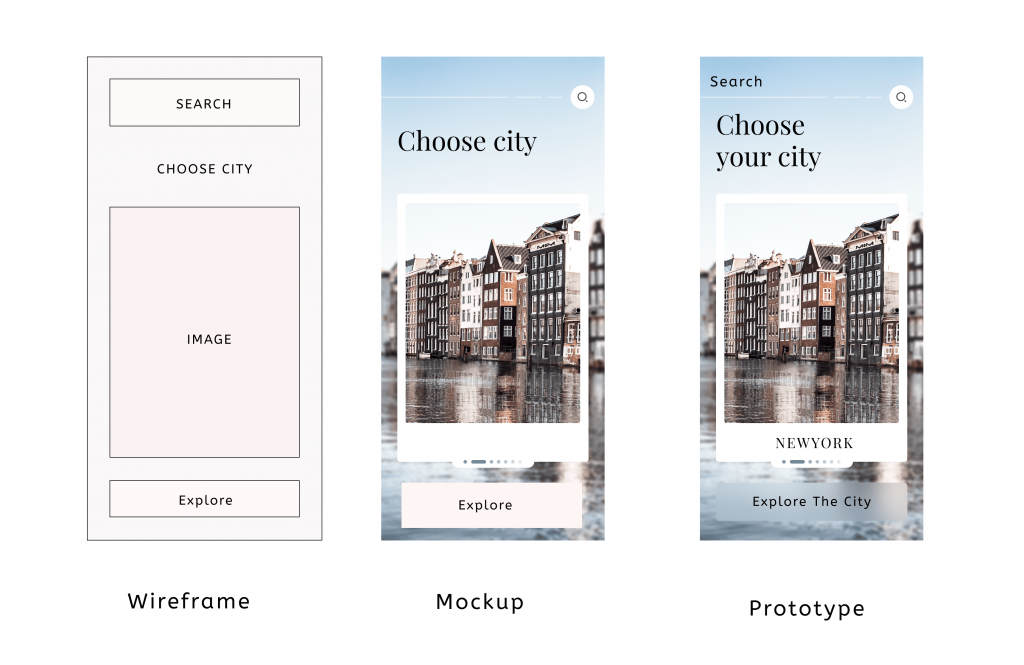
Benefits of Prototyping
Imagine that you are planning to create a software system. You need to first have the design of the software on how the software functions and what it looks like. Having the designs of how the product will look like, and how it will function provides a good path for engineers to work on. Creating a prototype helps in visualizing the actual product and helps in the development process.
Our current client had previously worked with a software company where there was no prototype of the application, which caused multiple issues. The development was done without the prototype. And the implementation was not according to the client’s requirement. The design was not satisfactory and the design flow was not accurate. This cost the client additional time and resources.
So what are the benefits of prototyping?
1. Helps in Understanding the Requirements from the stakeholders
Oftentimes, when developing the product, the requirements and the end result are not clear. If there is no prototype available, the development team starts working according to their understanding. Later on, after working some time, there will be a discussion regarding what the actual requirement is. This will cause confusion and cost time and resources. Prototyping helps solve this problem.
When a prototype design is created, all the team members can visualize how the product should look and function. There will be a clear understanding of the requirements.
2. Allows Streamlining the development process
Prototyping allows streamlining the development process. Prototype provides how each individual area functions with one another. The team can prioritize the work accordingly, so that no deadline gets delayed or missed. The team can plan accordingly for the dependent tasks and finish the tasks in the estimated timeline.
3. Get Feedback from Customers
Instead of creating the product, creating a prototype and asking the customers to test the prototype can be beneficial to the business. Once the prototype is ready, we can ask some of the customers to use the prototype and get their feedback. This will help in identifying the areas for improvement.
4. Low Cost, Low Risk
Creating the prototype helps to lower the risk of product failure, as it can be tested before, get feedback and improve on. This will help in lowering the cost of overall product development.
5. Saves Time and Money
Creating the prototype might seem time-consuming and costly at first. However, this saves time as well as money in the overall development of the product. Imagine having to redo the development of the product, because the requirements or the final product was not understood by the engineering team.
This will require additional time and resources. Prototyping helps in getting the requirements early on. This will save time for having to redo the development, which will save the cost as well.
6. Enhance the Quality
Prototyping the product also improves the product as it helps to identify unnecessary elements and the areas where the product can be improved upon. Testing the prototype allows us to find the flaws in the product. This will help in making the system better.
7. Help in Finding the Actual Cost of Development
Creating the prototypes shows the interaction that one element has with another. This helps engineers properly understand the task and help in estimating the time and resources required to complete the work. This will help in better estimation.
8. Resolve Misunderstanding and Conflicts
Prototyping allows for resolving the misunderstanding if any between the engineers and the stakeholders. Many times, the vision and the requirement of the system is one, and the engineering team understands that differently. This will cause misunderstanding and it will cost additional resources. Having a prototype solves this issue.
Also if the engineers are in disagreement about the product implementation, prototyping helps in brainstorming the best solution to implementing the product.
Final Thoughts
We tend to have a lot of excellent ideas and want to execute them as soon as possible. We invest in those new ideas, start brainstorming and implementing. When the product is out in the world, many times that product gets no traction with the customers. This results in loss of time and resources. Prototyping can help in solving this problem. Prototyping can be one of the best ways to test our assumptions, learn about the market and also enhance the product.
Next time if you are thinking of creating designs, prototypes and software development in general, we provide all these software development services. Feel free to contact us to make your idea into reality and to complete any software development projects successfully.